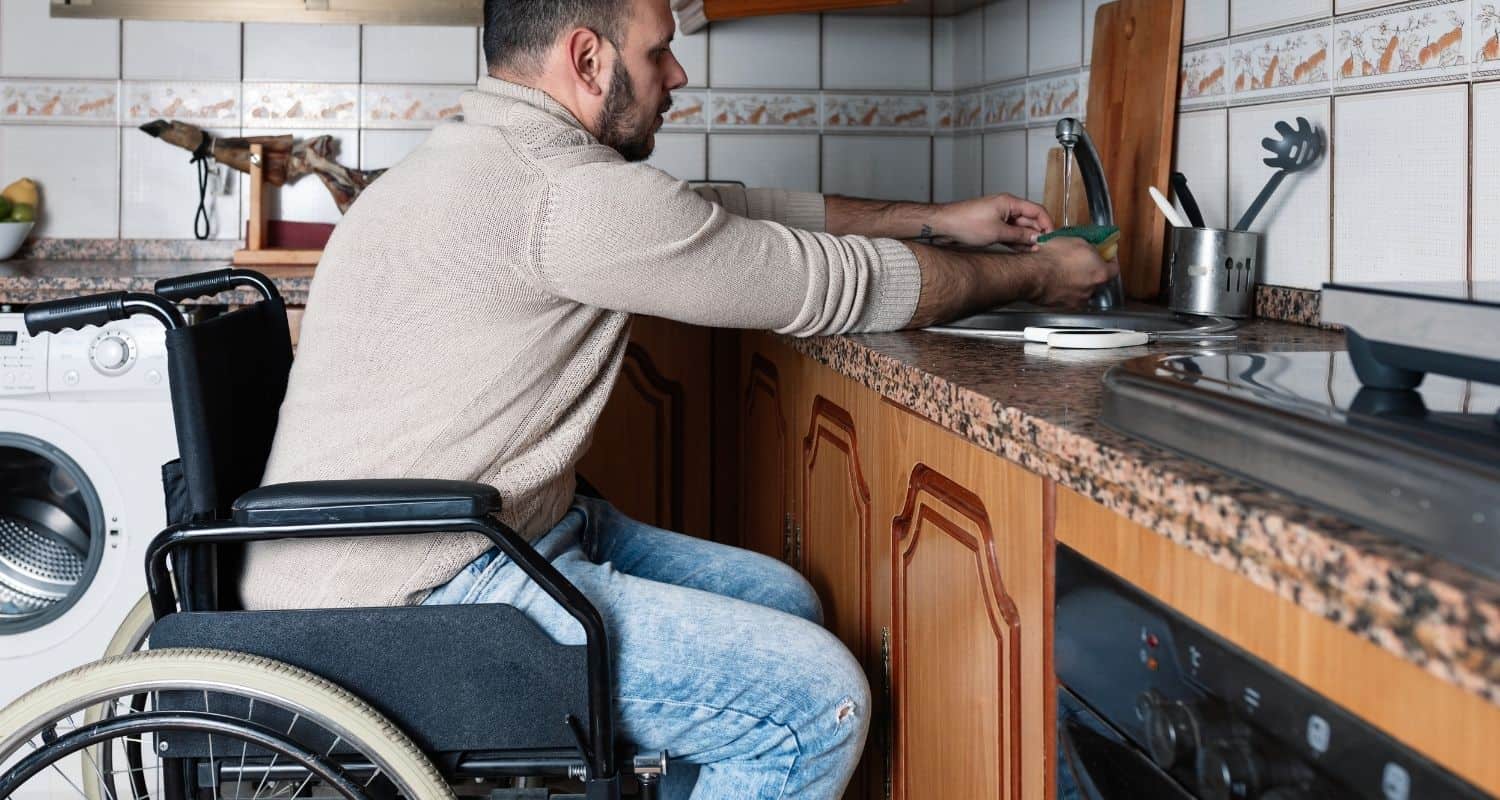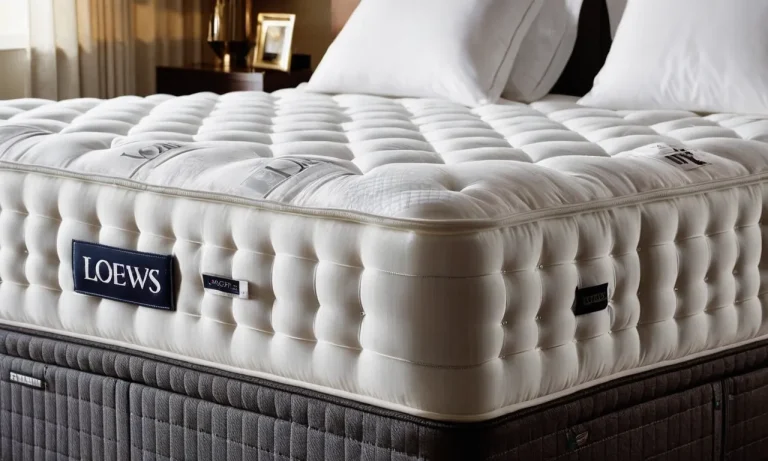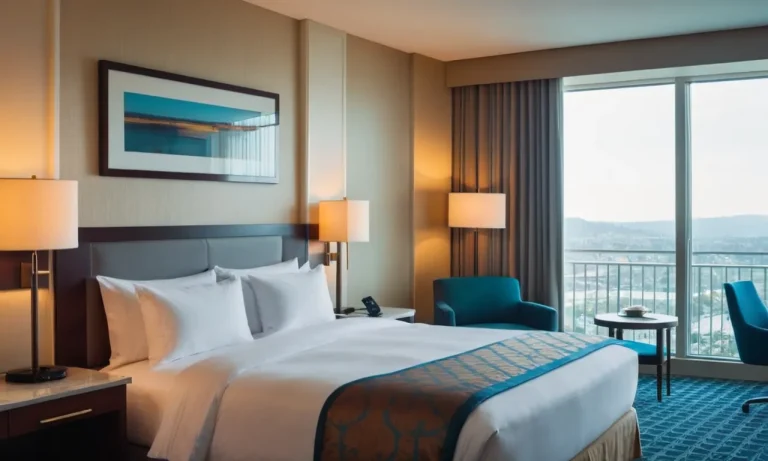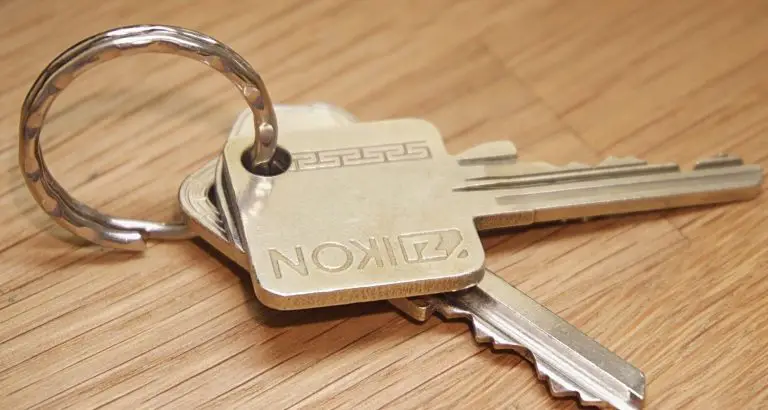What is an Accessible Hotel Room? A Comprehensive Guide
Traveling can be an exhilarating experience, but for individuals with disabilities or mobility challenges, finding suitable accommodations can be a daunting task. Accessible hotel rooms are designed to cater to the unique needs of these travelers, ensuring a comfortable and hassle-free stay.
If you’re short on time, here’s a quick answer to your question: An accessible hotel room is a specially designed room that provides features and amenities to accommodate individuals with disabilities or mobility challenges, ensuring their safety, comfort, and independence during their stay.
In this comprehensive guide, we’ll delve into the meaning of accessible hotel rooms, the various features they offer, and the importance of inclusive travel. We’ll also explore the legal requirements and industry standards that govern the design and implementation of these accommodations.
Understanding Accessible Hotel Rooms
Definition and Purpose
An accessible hotel room is designed to cater to the unique needs of individuals with disabilities, ensuring a comfortable and inclusive stay. These rooms are thoughtfully crafted to provide guests with mobility, visual, hearing, or cognitive impairments the utmost convenience and independence during their visit.
The primary purpose of accessible hotel rooms is to eliminate barriers and foster an environment where everyone can enjoy their travel experience without compromising their dignity or safety.
Legal Requirements and Industry Standards
The provision of accessible hotel rooms is not just a matter of hospitality; it’s a legal obligation governed by various laws and regulations. The Americans with Disabilities Act (ADA) Title III mandates that places of public accommodation, including hotels, provide equal access and services to individuals with disabilities.
Furthermore, industry standards, such as those set by the American Hotel & Lodging Association (AHLA), provide guidelines for designing and maintaining accessible hotel rooms.
Types of Disabilities Accommodated
Accessible hotel rooms are designed to accommodate a wide range of disabilities, ensuring an inclusive experience for all guests. Here are some common types of disabilities that are addressed:
- Mobility Impairments: Accessible rooms feature wider doorways, roll-in showers, grab bars, and lowered amenities to accommodate guests who use wheelchairs, walkers, or have limited mobility.
- Visual Impairments: Braille signage, tactile maps, and audible alerts assist guests with visual impairments in navigating the room and hotel facilities.
- Hearing Impairments: Rooms are equipped with visual alarms, amplified telephones, and closed-captioning televisions to ensure effective communication for guests with hearing difficulties.
- Cognitive Impairments: Clear signage, pictograms, and simplified instructions help guests with cognitive impairments understand and navigate the room and hotel amenities with ease.
According to the Centers for Disease Control and Prevention (CDC), approximately 61 million adults in the United States live with a disability. This staggering statistic highlights the importance of accessible hotel rooms in promoting inclusivity and ensuring that individuals with disabilities can travel and enjoy their stays without facing unnecessary challenges or barriers.
By understanding the definition, purpose, legal requirements, and types of disabilities accommodated in accessible hotel rooms, both travelers and hospitality professionals can better appreciate the significance of these accommodations.
With thoughtful design and adherence to industry standards, accessible hotel rooms empower individuals with disabilities to experience the joy of travel and create cherished memories without compromising their independence or comfort.
Ultimately, accessible hotel rooms are a testament to the hospitality industry’s commitment to inclusivity and ensuring that every guest feels welcomed and valued.
Key Features of Accessible Hotel Rooms
Accessible hotel rooms are designed to provide a comfortable and convenient stay for guests with disabilities or mobility challenges. These rooms offer a range of features that cater to different needs, ensuring an inclusive and welcoming environment.
By understanding the key elements of accessible accommodations, travelers can make informed decisions and enjoy a seamless experience during their hotel stay.
Accessible Entrances and Pathways
One of the primary considerations in accessible hotel rooms is ensuring easy access from the entrance to the room itself. This often includes ramps or level surfaces for wheelchair users, as well as wide doorways and hallways to accommodate mobility devices.
According to the Americans with Disabilities Act (ADA) guidelines (https://www.ada.gov/regs2010/2010ADAStandards/2010ADAstandards.htm), accessible routes must have a minimum width of 36 inches and be free of obstacles or hazards.
Spacious Layouts and Maneuvering Space
Accessible hotel rooms typically feature spacious layouts that allow for easy maneuvering and turning radius for wheelchairs or other mobility aids. This includes ample space around the bed, desk, and other furniture, as well as clear paths between different areas of the room.
According to a study by the Opening Doors Organization, nearly 60% of travelers with disabilities prioritize room layouts that accommodate their mobility needs.
Accessible Bathrooms
Bathrooms in accessible hotel rooms are designed with specific features to ensure safety and independence for guests with disabilities. These may include roll-in showers with grab bars, adjustable or removable shower heads, and accessible sinks and toilets with appropriate height and clearance.
The Accessibility Resource Center recommends a minimum turning radius of 60 inches for wheelchair users in accessible bathrooms.
- Roll-in showers with grab bars and adjustable shower heads 😊
- Accessible sinks and toilets with proper height and clearance 👍
- Ample space for maneuvering and turning radius 🙌
Assistive Devices and Amenities
In addition to physical accessibility features, many hotels offer assistive devices and amenities to enhance the guest experience. These can include visual alarms and notification systems for guests with hearing impairments, communication aids like TTY/TDD (teletypewriter/telecommunication device for the deaf) phones, and closed captioning or audio description services for in-room entertainment.
According to a survey by TravelAge West, over 75% of travelers with disabilities appreciate hotels that provide assistive devices and amenities tailored to their needs.
By understanding and incorporating these key features, hotels can create truly accessible and inclusive environments for guests with disabilities. It’s not just about meeting legal requirements, but about providing an amazing and welcoming experience for all travelers.
With thoughtful design and accommodations, accessible hotel rooms can open up new possibilities for exploration, relaxation, and unforgettable travel experiences.
Benefits of Accessible Hotel Rooms
Promoting Inclusivity and Equal Opportunities
Accessibility is a fundamental aspect of creating an inclusive society, and accessible hotel rooms play a crucial role in promoting equal opportunities for all individuals. By offering accommodations tailored to the needs of guests with disabilities or mobility challenges, hotels demonstrate their commitment to diversity and inclusion.
This not only enhances the overall travel experience for these guests but also empowers them to explore new destinations and engage in activities that may have previously been challenging or inaccessible.
According to a study by the World Tourism Organization, approximately 15% of the global population lives with some form of disability. By providing accessible rooms, hotels tap into a significant market segment and contribute to the global effort of ensuring equal access to travel and leisure activities for all.
This initiative aligns with the principles outlined in the United Nations Convention on the Rights of Persons with Disabilities, which emphasizes the importance of accessibility in creating an inclusive and equitable society.
Enhancing Safety and Comfort
Accessible hotel rooms are designed with safety and comfort in mind, ensuring that guests with disabilities or mobility challenges can enjoy their stay without compromising their well-being. These rooms often feature wider doorways, roll-in showers, grab bars, and lowered countertops, among other accommodations.
By prioritizing accessibility, hotels not only cater to the needs of guests with disabilities but also contribute to their overall sense of security and independence.
Furthermore, accessible rooms can benefit individuals with temporary mobility challenges, such as those recovering from injuries or surgeries. These accommodations provide a comfortable and safe environment, allowing guests to focus on their recovery without worrying about navigating inaccessible spaces.
According to a report by the Centers for Disease Control and Prevention (CDC), approximately 61 million adults in the United States live with a disability, highlighting the significant demand for accessible accommodations.
Catering to a Diverse Customer Base
By offering accessible hotel rooms, establishments can tap into a diverse customer base and cater to a broader range of travelers. This not only expands their potential market but also fosters a reputation for inclusivity and exceptional service.
As the demand for accessible travel continues to rise, hotels that prioritize accessibility gain a competitive edge and attract loyal customers who appreciate their commitment to inclusivity.
Moreover, accessible rooms can benefit families traveling with elderly relatives or individuals with temporary mobility challenges, such as pregnant women or those recovering from injuries. By providing a comfortable and safe environment for all guests, hotels demonstrate their dedication to exceptional customer service and create a welcoming atmosphere for everyone.
According to a survey conducted by Open Doors Organization, a leading advocate for accessible travel, 89% of travelers with disabilities prefer to book with hotels that offer accessible rooms and services.
Booking and Requesting Accessible Hotel Rooms
Researching and Comparing Options
When planning a trip that requires an accessible hotel room, it’s essential to do your research and compare various options. Start by visiting reputable travel websites like Expedia or Booking.com, which offer filters and search options specifically for accessible accommodations.
These platforms allow you to view detailed descriptions, photos, and amenities of accessible rooms, making it easier to find one that meets your specific needs. 😊
Additionally, consider consulting online travel communities or forums dedicated to accessible travel, where fellow travelers share their experiences and recommendations. These firsthand accounts can provide invaluable insights into the accessibility features and service quality of different hotels.
Don’t be afraid to ask questions and seek advice from those who have been in similar situations. 👍
Communicating Specific Needs
Once you’ve narrowed down your options, it’s crucial to communicate your specific accessibility needs to the hotel. This can include details about mobility aids (e.g., wheelchair, walker), hearing or vision impairments, or any other requirements that may impact your stay.
Don’t hesitate to ask questions about room dimensions, bathroom configurations, and other accessibility features to ensure they align with your needs.
Many hotels have dedicated staff or departments that specialize in accommodating guests with disabilities. Reach out to them directly to discuss your requirements and any additional services or equipment you may need.
Clear and open communication from the outset can help ensure a smooth and comfortable stay. Remember, the more information you provide, the better the hotel can prepare to meet your needs.
Advance Booking and Confirmation
Accessible hotel rooms are often in high demand, especially during peak travel seasons or major events. To increase your chances of securing the room you need, it’s advisable to book well in advance. According to a study by Travel Weekly, accessible rooms should be booked at least three to six months in advance for popular destinations.
🎉
Before finalizing your reservation, double-check all the details, including the accessible room type, amenities, and any special requests or accommodations you’ve discussed with the hotel. Once confirmed, be sure to obtain a written confirmation or reservation number for your records.
This documentation can be invaluable in case any issues arise during your stay.
By following these steps – researching and comparing options, communicating specific needs, and booking well in advance – you’ll increase your chances of securing an accessible hotel room that meets your requirements, ensuring a comfortable and enjoyable travel experience. Happy travels! 😍
Future Trends and Innovations
Technological Advancements
The world of accessible hotel rooms is rapidly evolving with the integration of cutting-edge technologies. Innovative solutions like voice-controlled assistants, smart home automation, and mobile app integration are becoming increasingly prevalent.
These advancements not only enhance convenience but also empower guests with disabilities to have greater control over their environment. For instance, voice commands can operate lighting, temperature, and entertainment systems, while mobile apps can provide room navigation and accessibility information at their fingertips.
According to a report by Statista, the adoption rate of smart home technologies in hotels is projected to reach 48% by 2025, indicating a significant shift towards tech-enabled accessible accommodations.
Sustainable and Eco-Friendly Design
As environmental consciousness continues to grow, the hospitality industry is embracing sustainable and eco-friendly practices in accessible room design. This trend not only benefits the planet but also enhances the overall guest experience.
Hotels are incorporating energy-efficient lighting, water-saving fixtures, and sustainable building materials to reduce their carbon footprint. Additionally, innovative solutions like living green walls and rooftop gardens are being integrated to improve indoor air quality and provide a soothing, nature-inspired ambiance.
According to a study by the American Hotel & Lodging Association, 88% of guests prefer hotels that implement eco-friendly practices. By combining accessibility and sustainability, hotels can cater to both guests with disabilities and environmentally conscious travelers.
Personalized Experiences
The future of accessible hotel rooms lies in personalized experiences tailored to individual needs and preferences. Through advanced data analytics and guest profiling, hotels can anticipate and cater to specific accessibility requirements before guests even arrive.
Customizable room features, such as adjustable lighting, temperature controls, and communication aids, will become the norm. Furthermore, virtual reality technology can revolutionize the booking process, allowing guests to explore accessible room options and make informed decisions.
According to a survey by PwC, 36% of travelers are willing to pay more for personalized experiences, indicating the growing demand for tailored accommodations.
As the world continues to embrace inclusivity and innovation, the future of accessible hotel rooms looks brighter than ever. With technological advancements, sustainable design, and personalized experiences, the hospitality industry is poised to redefine accessibility standards, ensuring that every guest feels welcomed, empowered, and truly at home.
👏🎉 The journey towards a more inclusive and accessible travel experience is well underway, and the future promises to be an exciting one for all travelers.
Conclusion
Accessible hotel rooms are a vital component of inclusive travel, ensuring that individuals with disabilities or mobility challenges can enjoy a comfortable and hassle-free stay. By understanding the features, benefits, and booking processes associated with these accommodations, travelers can make informed decisions and plan their trips with confidence.
As the hospitality industry continues to evolve, we can expect to see further advancements in accessible room design, incorporating cutting-edge technologies, sustainable practices, and personalized experiences.
By embracing inclusivity and catering to diverse needs, hotels can not only enhance the travel experience for all guests but also foster a more equitable and welcoming environment for everyone.







